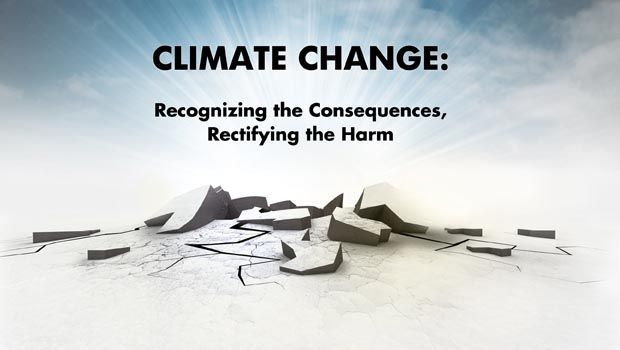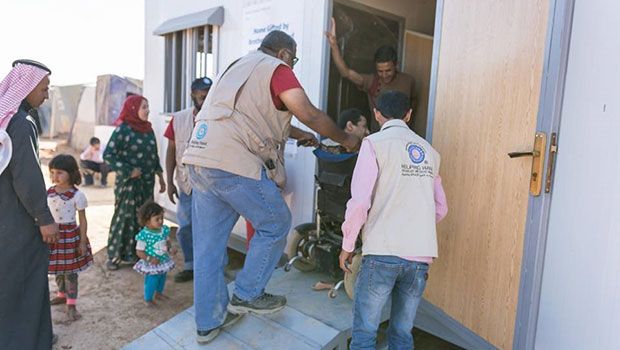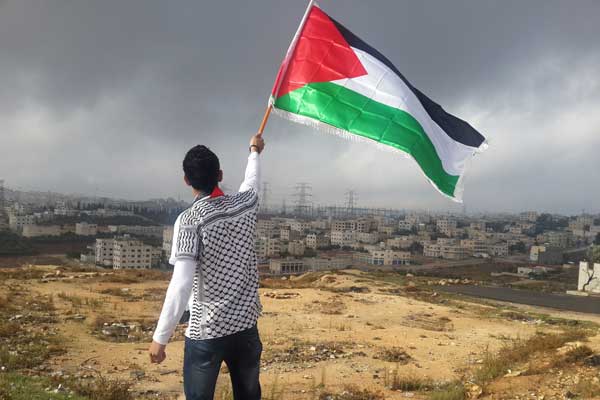Fossil fuels are deposits of organic material that have formed within the earth from remains of dead plants and animals. Over millions of years, these remains have been subjected to great pressure and heat and turned to petroleum, coal, and natural gas. These hydrocarbons fueled the Industrial Revolution in the 18th century and bolstered economic growth and technological advancement, providing a better standard of living to many human beings around the world. Fossil fuels, nuclear power, and renewable energy such as hydropower and solar power, are referred to as primary energy sources. World consumption has increased from 3.8 billion metric tons in 1965 to 11.1 billion in 2007.
We have to recognize the individual and collective madness that’s been wrought upon this earth. Then we have to rectify the harm.
Certain gases such as carbon dioxide, methane, nitrous oxide, and chlorofluorocarbons are emitted from the burning of fossil fuels and these absorb heat. As atmospheric concentration of these gases increases, the temperature rises, causing what is called a “greenhouse effect.” The earth is less able to release heat from the earth’s surface, through the atmosphere, and into space. Scientists now realize that the issue is not just global warming but the more comprehensive issue of climate change, disruption of ecosystems, and harmful impacts on human survival.
According to the Intergovernmental Panel on Climate Change (IPCC) which includes more than 1,300 scientists from around the world, global temperatures will rise 2.5 to 10 degrees Fahrenheit over the next 100 years, far higher than the 1.8 to 5.4 degrees that they predict would cause significant climate change. “Taken as a whole,” the IPCC states, “the range of published evidence indicates that the net damage costs of climate change are likely to be significant and to increase over time.”
While some areas will see benefits such as a longer frost-free season for growing crops, the potential damage from climate change is striking. Increased precipitation in some areas such as the northern U.S. has the potential for destructive and deadly flooding; other areas of the U.S. such as the southwest will continue to experience heat waves and droughts. Extreme heat days were considered one-day events every 20 years or so. Now they are projected to occur, by the end of this century, every two or three years throughout the U.S. According to NASA, hurricanes are becoming stronger and more intense, increasing since the early 1980s. They also project a rise in sea level of 1-4 feet by the end of the century, as a result of melting icecaps, with an ice-free Arctic Ocean in summer projected by mid-century.
NASA notes, “In the next several decades, storm surges and high tides could combine with sea level rise and land subsidence to further increase flooding in many of these regions. Sea level rise will not stop in 2100 because the oceans take a very long time to respond to warmer conditions at the Earth’s surface. Ocean waters will therefore continue to warm and sea level will continue to rise for many centuries at rates equal to or higher than that of the current century.”
Climate Change and Extinction of Species
According to the Nature Conservancy, a conservation organization, some species are forced to migrate when changes in weather and vegetation threaten their survival. More chilling is their projection that 25 percent of earth’s species are at risk for extinction by 2050 due to climate change. They list the already-documented wildlife victims, as well as projected ones:
In 1999, the death of the last Golden Toad in Central America marked the first documented species extinction driven by climate change.
Due to melting ice in the Arctic, polar bears may be gone from the planet in as little as 100 years.
In the tropics, increased sea temperatures are causing more coral reefs to “bleach,” as the heat kills colorful algae that are necessary to coral health and survival.
Several U.S. states may even lose their official birds as they head for cooler climates — including the Baltimore oriole of Maryland, black-capped chickadee of Massachusetts, and the American goldfinch of Iowa.
The Convention on Biological Diversity’s “Global Biodiversity Outlook 3” states that the population of wild vertebrate species declined by roughly one-third from 1970 to 2006; 42 percent of amphibian species are falling in numbers, and 40 percent of bird species. An article in The Guardian, “Protect nature for world economic security, warns UN biodiversity chief,” by their environment editor, John Vidal, states, “ According to the UN Environment Programme, the Earth is in the midst of a mass extinction of life. Scientists estimate that 150-200 species of plant, insect, bird and mammal become extinct every 24 hours. This is nearly 1,000 times the ‘natural’ or ‘background’ rate and, say many biologists, is greater than anything the world has experienced since the vanishing of the dinosaurs nearly 65m years ago.”
Climate Change and Heat-related Illness
Warmer temperatures increase the spread of infectious diseases and epidemiologists warn that insects and microbes that carry disease can migrate to regions where once the colder temperatures were inhospitable to their survival. The heat itself, of course, is a risk factor. An extreme heatwave in Europe in 2003 killed an estimated 30,000 to 70,000 people. The most vulnerable to extreme heat are children, the elderly, poor people without air conditioning, and individuals with asthma or heart disease. “Global warming is one of the gravest health emergencies facing humanity. It’s life-threatening and it’s affecting us now,” said Dr. Peter Wilk, M.D., executive director of Physicians for Social Responsibility. “The science confirms that the frequency and duration of heat waves has increased significantly over the last 50 years. In the United States, heat waves already kill more people during a typical year than floods, tornadoes and earthquakes combined. Given these worsening trends, taking decisive action to stop global warming becomes a medical necessity.”
Climate Change and Desertification
Desertification is defined as “the process by which fertile land becomes desert, typically as a result of drought, deforestation, or inappropriate agriculture.” One-third of the earth’s landmass is desert. The World Meteorological Organization, in a report “Climate change and desertification,” states that carbon dioxide-induced climate change and desertification are “inextricably linked.” Desertification is exacerbated by alteration of patterns in “temperature, rainfall, solar radiation and winds.” They forecast that at lower latitudes, crop productivity will be negatively impacted by even small temperature increases. African agriculture will be disturbed by shorter growing seasons and thus potential crop yield, especially in the semi-arid and arid regions will be less. Effects in Latin America include salinization and desertification of fertile land. More frequent droughts in Europe will diminish water reserves, limit hydropower, and impact crop yield.
Climate Change and Conflict
U.N. Secretary General Bam Ki Moon, in a 2007 Washington Post opinion piece, linked climate change with geopolitical conflict. He said, “Almost invariably, we discuss Darfur in a convenient military and political shorthand — an ethnic conflict pitting Arab militias against black rebels and farmers. Look to its roots, though, and you discover a more complex dynamic. Amid the diverse social and political causes, the Darfur conflict began as an ecological crisis, arising at least in part from climate change. Two decades ago, the rains in southern Sudan began to fail. According to U.N. statistics, average precipitation has declined some 40 percent since the early 1980s. Scientists at first considered this to be an unfortunate quirk of nature. But subsequent investigation found that it coincided with a rise in temperatures of the Indian Ocean, disrupting seasonal monsoons. This suggests that the drying of sub-Saharan Africa derives, to some degree, from man-made global warming.” Other analysts see the conflict in Syria as partly caused by climate change induced drought. Severely dry conditions devastated agriculture starting in 2006 and many farmers fled to urban areas in search of work. Aaron Wolf, a professor of geography, environmental sciences, and marine resource management who specializes in water resources policy and conflict resolution, as well as Middle East geopolitics, observes, “You had a lot of angry, unemployed men helping to trigger a revolution.”
Many researchers advise caution in linking climate change and conflict. But many studies see climate change as a “threat multiplier,” if not a direct cause of conflict. There are many factors at play including poverty, ethnic tensions, oppression, political instability, and territorial disputes. Certainly, though, climate change and the negative impacts on food and water availability, forced migrations, illness and death – all contribute to and exacerbate conflict.
Climate Change Via Corporate and Political Corruption
As reported on Voice of America’s website (VOA is the U.S. government’s official broadcaster outside the U.S.), John Kerry noted in his speech at the international anti-corruption summit in London on May 12, “We are fighting a battle — all of us — for our states, for our countries, for our nation state. Corruption is as much of an enemy because it destroys nation states as some of the extremists we are fighting.” He continued, “The extremism we see in the world today comes in no small degree from the utter exasperation that people have with the sense that the system is rigged,“ adding, ”And we see this anger manifesting itself in different forms in different elections around the world — including ours.” The corruption he is referring to is the tax evasion and money laundering that is highlighted in the Panama Papers. But corruption is like an octopus, extending its tentacles as far as it can reach. It includes the kleptocratic nations in which state revenues provide for lavish lifestyles for the political and business elites while the general population languishes in poverty. This is often the case in resource rich countries. Nigeria is just one example. The largest nation is Africa, with 47 percent of West Africa’s population, Nigeria has Africa’s largest natural gas reserves. Oil has fueled economic growth; however, roughly 70 percent of Nigerians live on less than $1.25 per day according to the International Food Policy Research Institute.
Corporate tax evasion is yet more far-reaching. Global Financial Integrity (GFI), an international organization that monitors corruption, reports that from 2001 through 2010, $5.86 trillion in illicit funds was taken out of developing nations. GFI’s director, Raymond Baker, states, “The corrupt component that stems from bribery and theft from government officials is really quite small-it’s only about three percent, or four percent, or five percent of the global total.” Baker continues, “The larger parts of these cross-border flows are the criminal component, which in our estimation is about 30-35 percent of the global total. But the commercially tax avoiding component — at about 60-65 percent of the total — is by far the biggest part of this problem.”
But going even further into the black hole of corruption, we hear from Janine R. Wedel, professor in the School of Public Policy at George Mason University and a Senior Research Fellow of the New America Foundation. In her book, “Unaccountable,” she writes, “…it’s clear that we must pay heed to the new corruption — which helped spark the outrage that has fueled today’s far-flung protest movements. In the new corruption, no envelope is passed under the table. No laws are clearly broken. Indeed, the players we meet in this book are far too subtle and sophisticated for the bribe-dispensing or even conventional lobbying of yesteryear. They are difficult to monitor and to hold to account precisely because their ‘corruption’ is elusive, hard to detect – and legal.”
The corrupt mindset that offers or accepts bribes, that enriches itself at the expense of many, that games the system to acquire and protect its power, privilege, and wealth, is the same mindset that pursues profits no matter the cost to the well-being of people, to safety, to the ecological balance of the planet. Despite the urgent call for clean energy alternatives and the science community’s warnings that fossil fuel must largely be left in the ground, the oil/energy companies have increasingly divested from alternative energy research and development and double-downed on their investments in “dirty energy” — drilling, fracking, and other pursuits of biofuel.
At the same time, some corporations use their wealth and lobbying power to thwart actions that government must take to address climate change. The Union of Concerned Scientists, in their report “A Climate of Corporate Control: How Corporations Have Influenced the U.S. Dialogue on Climate Science and Policy (2012),” state, “Unfortunately, many U.S. companies are using their influence to muddy the waters—casting unwarranted doubt on the science, adding confusion to the policy discussion, and holding back or slowing down action on solutions.”
Islamic Declaration on Climate Change
In 2015, the Islamic Declaration on Climate Change was adopted at an International Islamic Climate Change Symposium in Istanbul. The declaration calls on Muslims around the world to actively support and advocate for global, national, local, and personal measures to combat climate change. The Declaration speaks of the corruption (fasad) that results from following a model of ever-expanding economic growth and immoderate consumption. They detail the toxic consequences in addition to climate change – “contamination and befoulment of the atmosphere, land, inland water systems, and seas; soil erosion, deforestation and desertification; damage to human health, including a host of modern-day diseases.” The Declaration states that humans are accountable for their actions and that Muslims should live according to the example of Prophet Muhammad.
The Declaration calls for the reduction of greenhouse gas in the atmosphere, with clear targets and effective monitoring. It advocates investment in a green economy, and eschewing profit-making that harms the environment. The Declaration reminds us that “to chase after unlimited economic growth in a planet that is finite and already overloaded is not viable. Growth must be pursued wisely and in moderation.” It also, very importantly, enjoins a new “model of wellbeing” to replace the financial model that operates as the primary paradigm of business operations and government policy-making, recognizing that the current model of putting profits before all other considerations, including the safety and well-being of people, “depletes resources, degrades the environment, and deepens inequality.”
The Islamic Declaration on Climate Change is well worth reading in its entirety, and it is included in this issue for readers’ easy access.
Guardianship – Inwardly & Outwardly
Conservation implies watching over, guarding, protecting. As to the natural world, that is to guard its integrity, its unimpaired and undiminished condition. It is to protect its balance and equilibrium, its seasons and cycles, its interdependence of eco-systems. As to the human world, we are enjoined to protect our integrity as well, in the smallest to the grandest matter. That is the conserving part. The other just as essential part is the growth aspect of our human condition. There are many constructs of transformation in Islam. Fundamental examples include Islam to eman to ihsan; or the lower, base soul to the self-reproaching soul to the tranquil soul. Along these lines, the Quran tells us, “You shall surely travel from stage to stage” (Quran 84:19). And the Prophet (peace be upon him) said, “He whose two days are equal surely is a loser” (Al-Daylami). Imam Al-Shafa’a was asked why he often used a walking stick since he was not old or ill. He said that the walking stick reminded him that he was journeying (Kitab Madarej Al-Salekeen). And of course there is the oft-quoted verse, “Verily never will Allah change the condition of a people until they change what is in themselves” (Qur’an 13:11).
These examples and references all connote transformation — expanding consciousness and self-awareness, action-taking, and chiefly, purifying of the heart. That is devotion to cutting through the egoic constructs that keep us stuck in useless or detrimental habits of thought, emotion, and/or behavior – as individuals, groups, and nations. We must protect the earth. We must change any conscienceless habits in our daily lives. The natural expression of life must be a passion for humaneness. Otherwise it is nothing more than compulsive drive for dominance, with all the destructive force that entails – exploitation, conflict, dispossession, death. Our devotion, our zeal, must be to cultivate in our minds and hearts a corrective to the ego’s self-serving promptings and, thus, the incapacity to harm others or commit injustice.
Activism to Rectify the Harm
The activism necessary to pressure our government officials to rectify the harm done by burning fossil fuels is the same activism necessary to pressure corporations to prioritize human well-being and environmental integrity before profit. That same activism must infuse our will to transform ourselves. The pollution we see around the globe is all the negativity we hold within our minds and hearts, expressed in resentment, envy, hatred, anger, feelings of superiority or inferiority, and so on; inner pollution that humanity projects outward. Part of the surrender to God is an acceptance, on the most basic existential level, of the inner and outer conditions we face. Then we can liberate ourselves from resistance to what beleaguers us. This frees up incredible energy to take action to change whatever needs to be, and can be, changed. The path beginning in Toledo, Ohio encircles the globe and comes back upon its starting point. No trajectories lead out of the connected, interdependent whole. To realize that is to know that our mutuality can reside in peace or agonize in disharmony.
In a state of disharmony, appalling dissolution is at hand when so many are willing to poison the oceans and rivers, cut down the forests and destroy the habitats of a myriad of species, or drill out of the earth the organic residue, formed over eons, that when burned causes a dangerous imbalance in nature, threatening survival of life on this planet. We have to recognize the individual and collective madness that’s been wrought upon this earth. Then we have to rectify the harm.
Purify the heart, guard our relationships, feed and protect the needy, dispossessed, and vulnerable; honor and respect women, elect mature and ethical government officials, rally to end the culture of browbeating, coercive foreign policy and endless war-making; advocate sustainable energy, push for an economy that puts people and living in harmony with nature before profits. That’s enough to start.
“And We will surely test you until We make evident those among you who strive and persevere in patience; and We will test your affairs” (Quran 47:31).






